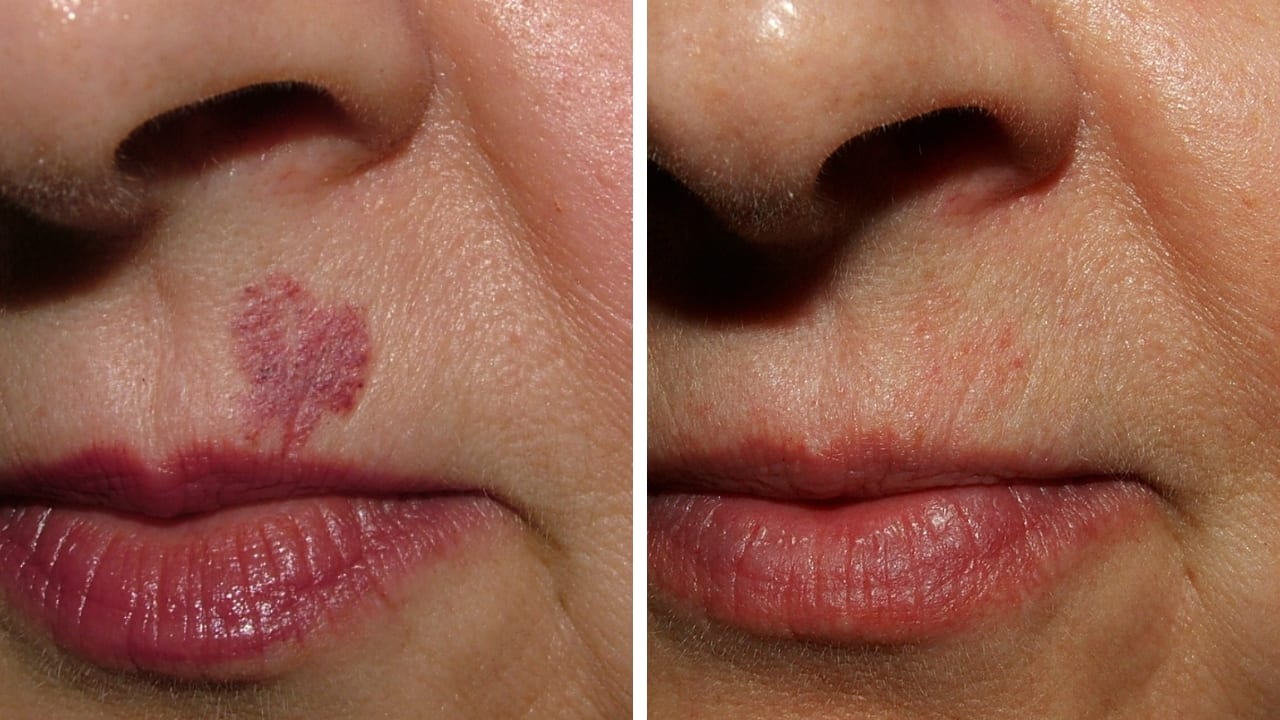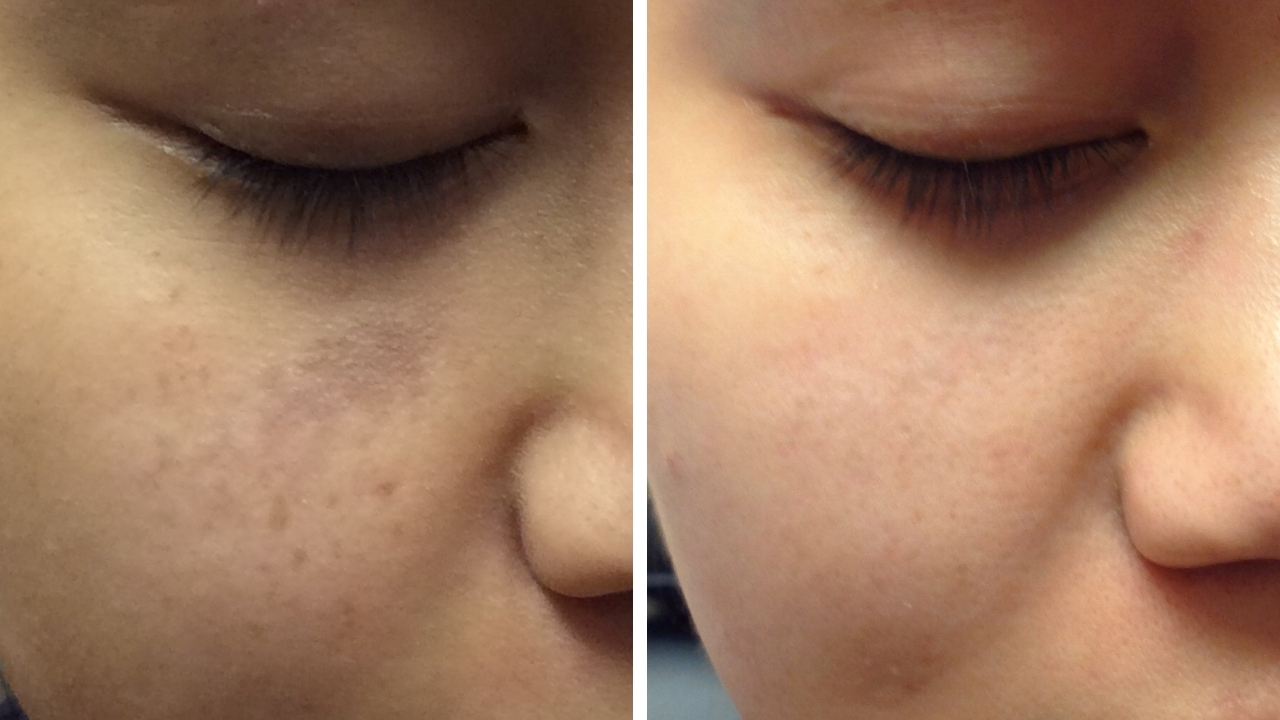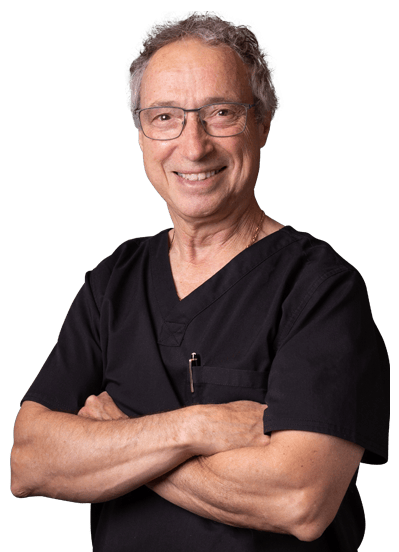Other Skin Issues; Red Things, Brown Things and Bumpy Things

Other Red Things, Brown Things and Bumpy Things
Red Things, Brown Things & Bumpy Things
Arbutus Laser’s Skin Department retains highly skilled physicians and technicians with over 150 years of collective experience in Aesthetic Medicine. Our team constantly undergoes advanced training and attends conferences for the best results. We prioritize state-of-the-art technology, patient satisfaction, and ethically based standards-of-care, with no salespeople or commission-based incentives.
Your unique skin concerns are assessed by our experienced professionals who consider your health history, priorities, and budget, ensuring informed decisions for desired outcomes. We are dedicated to educating and helping you achieve healthy, beautiful skin.
"The largest organ of your body deserves care."
Other Red Things, Brown Things and Bumpy Things
Moles & Skin Tags
Moles are benign, raised skin growths that are typically black or brown. There are many types of moles and some are more prone to skin cancers than others. Moles can be removed for medical reasons and for cosmetic reasons. Different techniques are used depending on the type of mole.
A skin tag, or “acrochordon,” is a benign growth often found on the bra line, neck, underarms, or eyelids, usually where skin rubs against other skin. They look like small “hanging” pieces of skin, possibly smooth or wrinkled, and can vary in size and colour. While their exact cause is unclear, friction, as well as factors like obesity and genetics, play a role in their development.
OUR APPROACH TO TREATING MOLES & SKIN TAGS
When we look at removing moles or skin tags, consultations are required to determine the technique needed to remove the mole or skin tag.
How we choose to remove them is dependent on the skin tags and moles itself. The options include cryotherapy, electrocautery, CO₂ laser, shave biopsy with the erbium laser or pico laser.
What You Can Expect:
During your consultation, we will assess your skin tag(s) or mole(s) and discuss your treatment options. Mole treatment depends on the type, size, location, and reason for removal (e.g., cosmetic concerns, irritation, or suspicion of cancer).
Most skin tag and mole removal procedures are quick. The downtime can vary based on the treatment chosen. Scabbing and crusting can last 7-21 days.
It is important to keep the area covered when outdoors for at least the first 10 days after treatment (and ideally ongoing) and to always use sunscreen (SPF 30 or higher) in the future.
Cost for removal of skin tags start at $175 per session and cost for mole removals start at $300 per session.
Consultation for Moles may be covered by MSP with a referral from your family physician. For more information, please call 604-731-5512.
Before
After

Mole Removal
Other Red Things, Brown Things and Bumpy Things
Seborrheic Keratosis & Actinic Keratosis
Seborrheic Keratosis (SK) and Actinic Keratosis (AK) are both common skin growths, but they have different characteristics, origins, and implications.
Seborrheic keratoses (SK) are benign skin growths that often present as raised, waxy, warty, or scaly patches, appearing as though they’re stuck onto the skin. They can range in colour from light tan to dark brown or black. While their exact cause remains unclear, they tend to emerge with age, possibly influenced by genetic factors, and even though sun exposure might contribute, it’s not the primary cause. These growths can manifest anywhere on the body, except the palms, soles, and mucous membranes.
Actinic keratoses (AK) are precancerous, rough, scaly patches with the potential to develop into squamous cell carcinoma if not addressed. Often feeling dry, rough, itchy, or tender, their primary cause is over exposure to ultraviolet (UV) light, from sources like the sun or tanning beds. These lesions predominantly emerge on sun-exposed regions, including the face, ears, neck, scalp, hands, forearms, and lips.
OUR APPROACH TO TREATING SEBORRHEIC KERATOSIS AND ACTINIC KERATOSIS
For both Seborrheic Keratosis (SK) and Actinic Keratosis (AK), treatments vary and consultations are required to determine the technique needed.
While SK’s, being benign, might not require intervention unless they’re irritating or cosmetically bothersome, they can be addressed with cryotherapy or laser.
AK’s, due to their precancerous nature, typically warrant treatment. Approaches for AK’s include cryotherapy, topical medications, or Fraxel® laser.
What You Can Expect:
During the consultation, your skin will be assessed. Ideally, the skin should be fair and untanned for treatment. This includes exposure to self tanners, spray tan and tanning beds.
Treatment of SK or AK skin concerns can require multiple sessions and is not necessarily a quick fix.
Multiple treatments may be recommended.
Downtime after treating these conditions will vary based on the chosen treatment option. Expect to have some redness or swelling to the treated area for 1-4 weeks.
It is important to keep the area covered when outdoors for at least the first 10 days after treatment (and ideally ongoing) and to always use sunscreen (SPF 30 or higher) in the future.
Cost of treatments range widely and start at $175 per session.
Consultations are required to treat seborrheic keratosis and actinic keratosis with the possibility of treating on the same day.
Consultation for Actinic Keratosis may be covered by MSP with a referral from your family physician. For more information, please call 604-731-5512.

Healthy Skin,
is Beautiful Skin.
Other Red Things, Brown Things and Bumpy Things
Milias & Sebaceous Hyperplasias
Milias are tiny, white, hard cysts that appear just under the skin’s surface. They are formed when keratin becomes trapped beneath the skin, appearing as small, dome-shaped, pearly-white bumps.
Milia are not painful and most frequently develop on the face, especially on the eyelids and cheeks.
Sebaceous hyperplasia is a harmless, common skin condition that becomes more common with age. It occurs when the sebaceous oil glands make too much oil and gets trapped under the skin causing shiny, yellowish or flesh-colored bumps that are typically 2-4 mm in diameter.
OUR APPROACH TO TREATING MILIA AND SEBACEOUS HYPERPLASIA
While milia’s will generally go away on their own, it can take months to years before that happens. Manual extraction with a sterilized needle, or electrocautery, are our most common approaches for milia removal. Some may be too deep to extract and we may suggest coming back in a few months when the milia(s) is closer to the surface of the skin.
Skin care regime is assessed during consultation to determine if it is the cause of your milia formation and regular exfoliation practices may be introduced at this time.
Sebaceous hyperplasias are generally more stubborn to treat. Options include lasers such as the smooth beam, Vbeam®, Fraxel®, or Erbium YAG laser. Multiple treatment sessions are usually required and they usually shrink in size or disappear completely. We can not guarantee results from the laser.
What You Can Expect:
When you do choose to remove milias or sebaceous hyperplasias, a consultation is required so we can determine the best course of action. Sometimes milia(s) can be removed at the time of consultation.
The treated areas may have some mild redness and swelling after that can last for up to 7 days. Make-up can be applied 24 hours after the treatment.
It is important to keep the area covered when outdoors for at least the first 10 days after treatment (and ideally ongoing) and to always use sunscreen (SPF 30 or higher) in the future.
Cost of treatments range and start at $125 per session.
Consultations are required to treat milias or sebaceous hyperplasias with the possibility of treating on the same day.
Other Red Things, Brown Things and Bumpy Things
Cherry Hemangiomas & Venous Lakes
Also known as Campbell de Morgan spots, cherry hemangiomas are usually circular, bright red spots on the skin that are a collection of small blood vessels. They vary in size and range from a pinpoint to >5mm in diameter. Larger ones can be slightly raised. The causes of these lesions are unknown, although genetics play a large factor. The number of spots tends to increase as a person ages.
A venous lake is a small blood vessel (vein) in the skin, which over time has become enlarged and dilated, like a varicose vein. Although they may arise anywhere, they typically occur on the lower lip (on the vermilion margin or mucosal surface), on an earlobe, or elsewhere on the face, neck, or upper trunk. They are generally asymptomatic but occasionally can become painful or bleed if traumatized.
It is not known exactly what causes venous lakes. They tend to arise on sun-exposed surfaces and are seen more frequently with age. Some may occur from mechanical trauma such as biting one’s lip.
OUR APPROACH TO TREATING CHERRY HEMANGIOMAS & VENOUS LAKES
Treatment is done to improve the cosmetic appearance as they are rarely symptomatic. Cherry hemangiomas and venous lakes are treated with the Pulsed Dye Vbeam® or KTP lasers. Small Cherry hemangiomas may be treated with electrocautery.
The treatment is relatively painless and very quick. Many may be treated in a single session. We see this often with venous lakes. Cherry hemangiomas generally do not return after treatment; however, your body may continue to develop new ones.
What You Can Expect:
During the consultation, your skin will be assessed. Ideally, the skin should be fair and untanned for treatment. This includes exposure to self tanners, spray tan and tanning beds.
Most cherry hemangiomas can be eliminated with little to no bruising or down-time. It is possible to experience crusting and/or scabbing for up to 3 weeks after treatment.
Venous lakes will appear darker and hard after a treatment session for up to 4 weeks.
Treatments are relatively painless and the sessions are fairly quick.
We typically recommend planning for 1-3 treatments, especially if there are larger lesions. However, many spots can be treated in a single session.
It is important to keep the area covered when outdoors for at least the first 10 days after treatment (and ideally ongoing) and to always use sunscreen (SPF 30 or higher) in the future.
Our treatments for cherry hemangiomas and venous lakes range in cost and start from $250 per session.
Consultations are required to treat cherry hemangioma or venous lakes with the possibility of treating on the same day.
Before
After

Cherry Hemangiomas
Before
After

Venous Lake
Other Red Things, Brown Things and Bumpy Things
Port Wines Stains
A port wine stain (PWS) is an abnormal collection or network of blood vessels present beneath an outer layer of normal skin. Although there is some genetic predisposition, there is no known cause of port wine stains. It was named because the skin appears as red, pink or purple, such as port wine. They occur in about 3 in 1000 people and can be found anywhere on the body but are most visible in the head or neck regions.
OUR APPROACH TO TREATING PORT WINE STAINS
The Pulsed Dye laser is still the international gold standard treatment of choice for this congenital type of birthmark. We have successfully been treating port wine stains since 1992.
Another option is the long-pulsed YAG laser. The long-pulsed YAG laser is useful for treating nodules that can appear with port wine stains in the elder population, especially if treatment was not initiated at a young age. The best time to have this birthmark treated is in infancy.
What You Can Expect:
During the consultation, your skin will be assessed. Ideally, the skin should be fair and untanned for treatment. This includes exposure to self tanners, spray tan and tanning beds.
Treatments for port wine stains are quick, generally well-tolerated, and require multiple sessions. Some of the PWS are resistant to treatment and complete removal is not always possible.
Immediately after treatment, the port wine stain will become darker which can last up to 2-3 weeks and then it will begin to fade.
It is possible that a test patch be performed before treating an entire area.
It is important to keep the area covered when outdoors for at least the first 10 days after treatment (and ideally ongoing) and to always use sunscreen (SPF 30 or higher) in the future.
Treatment for port wine stains may be done at any age, but young children are now referred to children’s hospital for treatment under general anesthetic.
Cost of treatments for port wine stains range and start at $250 per session.
Consultation for port wine stains may be covered by MSP with a referral from your family physician. For more information, please call 604-731-5512.
Before
After

Port Wine Stain
Before
After

Port Wine Stain

If it's a concern for you,
it's one for us.
Other Red Things, Brown Things and Bumpy Things
Birthmarks
A birthmark is a coloured mark on or under the skin that is present at birth or develops shortly after birth. They are genetic in origin and are determined before we are born.
Some birthmarks fade with time while others can become more pronounced. Birthmarks may be either vascular (Port Wine Stain) or pigmented (Congenital Pigmented Nevus).
A pigmented patch, such as a café au lait birthmark or a nevus of ota birthmark can appears in early childhood or later in life. They appear darker in naturally darker skin.
At Arbutus Laser, we have been treating various kinds of birthmarks for many years and have learned not all birthmarks respond to lasers the same way. It is rare, but possible that some lesions will not be responsive to treatment.
We will assess the birthmark during consultation to determine the treatment options.
OUR APPROACH TO TREATING BIRTHMARKS
Previously, we have used the Ruby Laser and the Medlite laser (Q-switched YAG) for birthmarks. They were the first lasers used to help improve the appearance of birthmarks.
With more recent advances in technology, the Picosecond laser is now our first choice for treating pigmented birthmarks. It selectively destroys pigmentation in the skin without damaging the surrounding tissue or outer layer of the skin (epidermis).
What You Can Expect:
During the consultation, your skin will be assessed. Ideally, the skin should be fair and untanned for treatment. This includes exposure to self tanners, spray tan and tanning beds.
Treatments for birthmarks are quick, well-tolerated, and require multiple sessions. Some birthmarks are resistant to treatment and complete removal is not always possible.
Some of these treatments may lead to mild to moderate redness and swelling for 3 to 14 days post session.
It is possible that a test patch may be performed before treating an entire area.
It is important to keep the area covered when outdoors for at least the first 10 days after treatment (and ideally ongoing) and to always use sunscreen (SPF 30 or higher) in the future.
Cost of treatments for birthmarks range and start at $250 per session.
Consultation for birthmarks may be covered by MSP with a referral from your family physician. For more information, please call 604-731-5512.
Before
After

Cafe au lait Birthmark
Before
After

Cafe au lait Birthmark
Other Red Things, Brown Things and Bumpy Things
Other ‘THINGS’

